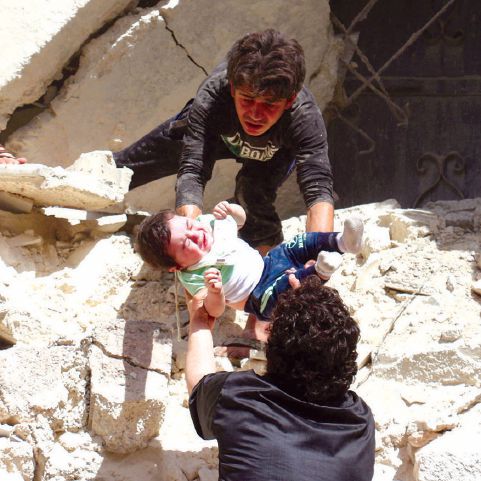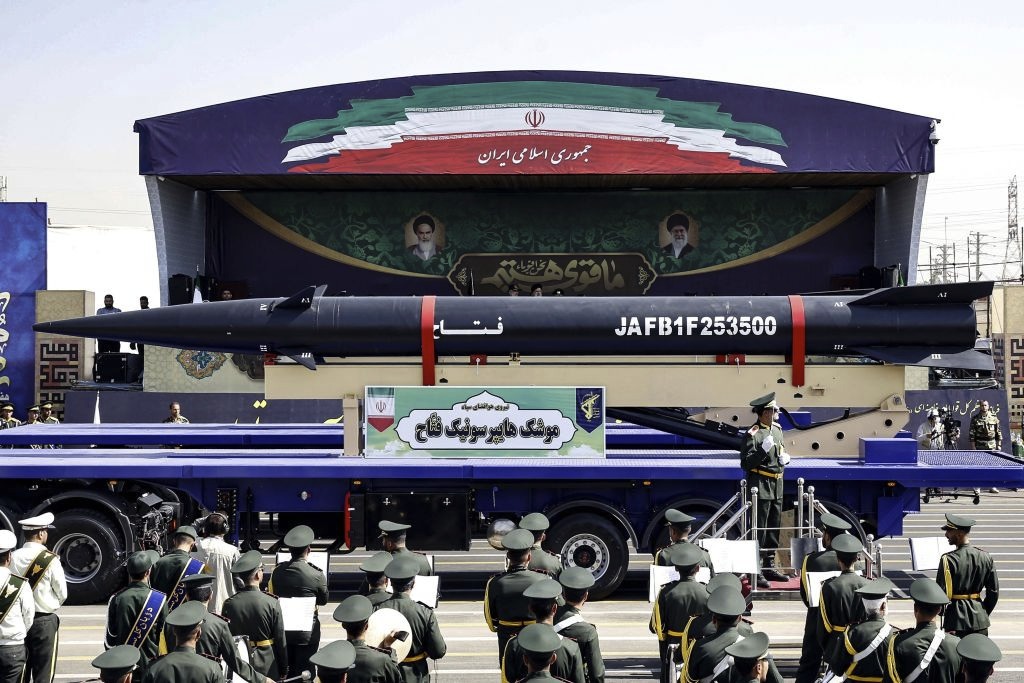Aleppo and Mosul: A tale of two cities
Eyad Abu Shakra/Al Arabiya/August 11/16
In 1859, the celebrated British author Charles Dickens wrote A Tale of Two Cities, a famous novel whose events took place in Paris and London during and in the aftermath of the French revolution, and dealt with the plight of the French peasantry under the old nobility.
Before that date, however, two Middle Eastern cities with glorious history were part of the realm of the Hamdanids (890 AD – 1004 AD). The Banu Hamdans were descendants of the prominent tribe of Taghlib, who hail from the mother tribe Rabi’a bin Nizar bin Adnan (Adnan being the progenitor of the ‘Northern Arabs’). Their achievements in defense of Arab lands especially those of Sayf al-Dawla, the governor of Aleppo, was glorified by the great Arab poet al-Mutanabbi. A contemporary of Sayf al-Dawla was his cousin Nasser al-Dawla, the governor of Mosul.
However, Aleppo and Mosul, the largest second metropolises of Syria and Iraq respectively, the most beautiful, most culturally diverse, and socially sophisticated, are now in deep trouble. Aleppo is suffering a war of starvation and mass murder carried out by Bashar al-Assad’s regime, Russia’s air force and Iran’s sectarian militias; and is threatened with one of the worst forced population exchange in the modern history of the Middle East since the Palestinian “nakbah” in 1948.
Mosul’s fate does look less tragic if ‘liberating’ it of ISIS is left to the sectarian ‘People’s Mobilization’ militia whose true identity became apparent after the massacres it committed in al-Muqdadiyah and al-Fallujah as well as other Sunni towns in Iraq.
It is not a coincidence that these two bastions of “Arabism” are facing such a peril; nor is it surprising that the devastating storm blowing in the Middle East since 2003 is changing the demographic fabric of the region along with redrawing its maps and reapportioning foreign influence there. The two aforementioned cities share a demographic identity that best embody an unwanted status quo.
A status quo that must be replaced as part of the new plan designed for the region by the rising international and regional powers. Both Aleppo and Mosul have a Sunni Arab majority along with sizeable Christian and non-Christian, Arab and non-Arab minorities, within the two cities and in their surrounding areas, all living in peace and harmony for centuries.
Pessimism about the future
What John Brennan, the Director of CIA, said the other day expressing his pessimism about the future of Syria, and his interesting insinuation to the possibility of partition is nothing but an admission of efforts being made by more than one side toward partitioning Iraq, and possibly, Turkey too; as well as preparing the ground for an independent Kurdish state that many within Syria and Iraq think its declaration is merely a matter of time.
Indeed, the recent disturbances in Turkey, the repercussions of which may not end soon, confirm the dynamics of instability and change; more so as the international community stayed silent for too long as Syrian and Iraqi territories were being transformed into a mega-camp that attracts, gathers and trains radical Sunni groups as a prerequisite for the implementation and then justification of the new ‘plan’.
Today, Russia and the al-Assad regime – which Russia insists it is not keen to keep in power – are working in tandem, with Iran’s military efforts, to create a new and dangerous demographic status quo in Syria, the high cost of which would be paid by the Sunni Arab majority.
Today, Russia and the al-Assad regime are working in tandem, with Iran’s military efforts, to create a new and dangerous demographic status quo in Syria, the high cost of which would be paid by the Sunni Arab majority
The first step on this route started in the city of Homs and its environs with well prepared and executed ethnic/sectarian cleansing aiming at strongly connecting the capital Damascus with the Syrian coastal region (with an Alawite majority) and Shi’ite-dominated Lebanon through Hezbollah, and then was completed by bolstering the defenses in greater Damascus and its countryside.
Now, after uprooting and evicting around 13 million Syrians most of whom are Sunni Arabs, al-Assad is cooperating with Moscow and Tehran, against a background of total international silence, in securing the expulsion of around 300 to 400 thousands from the besieged Opposition-controlled neighborhoods of Aleppo, as they did to populations of the Aleppo countryside.
In Iraq too, following the “liberation” of Fallujah from ISIS, efforts are now gathering pace to liberate Mosul, which the extremist terrorist organization has turned into a major stronghold, rivalling its ‘capital’ the city of Raqqah in Syria.Disastrous exodus
Also in Mosul the international community does not seem to discount the possibility of a disastrous exodus from a city inhabited by around 1.5 million inhabitants. And as is the case with Al-Assad who would not have been able to achieve anything in Aleppo without strategic Russia air and Iranian land support, the Iraqi premier Dr Haider Abadi is so politically weak that on his own he can do nothing.
Thus, neither Abadi nor his senior cabinet members can decide anything in Iraq where Iran enjoys both immense military strength and a virtual American carte blanche after the JCPOA, not forgetting the Kurdish Peshmerga militia which is now a fully-fledged army in a de facto independent Iraqi Kurdistan.
Dr Abadi is too week to prevent the ‘People’s Mobilization’ militia from fighting in Mosul, and to decide the future of Mosul after ridding it of ISIS as well as a high percentage of its own people, when the time comes to draw the map of northern Iraq and define the relationship of the Kurds of Iraq with their brethren in northern Syria.
Given this worrying picture, one cannot but point out to a very important and negative factor, without which the conspiracy of uprooting and displacement would have been difficult to carry out. This factor is the presence of extremist foreign fighting groups that are alien to the fabric of the Arab east, but have come from all over the world declaring “support” (i.e. Nusra) of the people of Syria, or “fighting the infidels”, and claiming the founding of ISIS in Iraq. Incidentally, the main loser from what these groups have thus caused or achieved are the Arab Sunni Muslims of the region.
The announcement made by Abu Mohammad al-Jawlani, a senior figure in al-Nusra Front that his group has severed its links with al-Qaeda and formed an unattached new organization called “Fateh Ash-Sham” only confirmed what it sought to dispel. Al-Jawlani confirmed in his announcement all that was being said about al-Qaeda being there in Syria, with all its discourse, slogans, objectives and infringements which do not conform with an all-encompassing, pluralistic, national Syrian state.
This meant he unwittingly was giving credence to claims long made by Moscow and others in western capitals that defeating the Syrian revolt was not only justified but also necessary, more so, after recent terrorist attacks in Europe and America in the age of ‘Islamophobia’!
This article was first published in Asharq al-Awsat on August 10, 2016.























